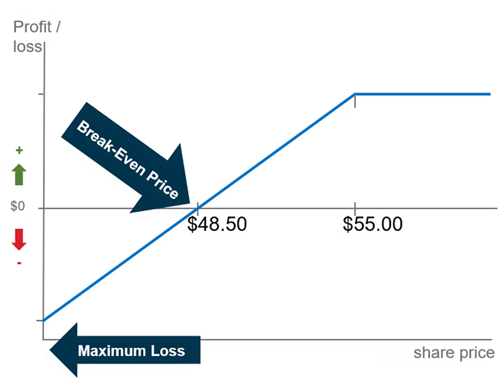What is tax-loss selling?
Tax-loss selling, also known as tax-loss harvesting, is a tax strategy designed to minimize or cancel out capital gains in a non-registered account. The investor will sell securities (e.g., stocks, ETFs, mutual funds) held in their non-registered accounts that have decreased in value below the book value to create a capital loss, which can then be used to offset other capital gains.
How it works and why?
The idea behind this strategy is to decrease or offset one’s taxable capital gains by selling investments in a non-registered account that are at a loss. The goal is to time them so that the loss occurs in the same fiscal year as the gain. This would minimize the amount of tax payable on the 50% of the capital gain that is taxable or eliminate the tax owing altogether.
Example of tax-loss selling
An investor sells shares of ABC stock in their cash account this year and has realized a capital gain of $5,000 that will need to be declared on their tax return. The investor also holds shares of XYZ stock whose share price has declined, which if sold during the same year would result in a capital loss of $5,000. The investor does not expect the shares of XYZ to recover in the near term and proceeds to sell them. The result is that the net capital gain is zero and no tax is owing.
When does tax loss selling start?
Most conversations about tax loss selling usually tend to occur in the month of December, as investors take stock of their trading wins and losses. Investors have until one business day before the last trading day of the year to sell their shares and crystallize the loss.
Ideally tax loss selling should be a year-round consideration for the investor. By waiting till the last minute there might not be any securities to select for a capital loss or the market sentiment might have changed to positive on the potential securities and the investor would prefer to hold onto them. If the shares are sold and have been bought within a time frame of 30 days before or after, the superficial tax loss rule would take effect.
What’s the superficial tax-loss rule?
For most investors, tax loss selling is straightforward. But there are certain rules that the Canada Revenue Agency (CRA) has in place that need to be followed.
When an investor sells a security to realize a loss, the superficial loss rule states that the capital loss will be denied if the investor purchases an identical security within 30 calendar days of the settlement date of the sale. This also means you can't purchase the security 30 days before your settlement date as well. An investor can’t sidestep this rule by making the purchase via another account like a RRSP or an affiliate such as a corporate account or even a spouse’s account.

Good to know! The settlement date of a securities’ sale is generally 1 business day after the date you sold or bought a security. You can find it on your account history or trade confirmation in your brokerage account.
Tax Loss Selling and the 30-Day Rule
Investors often face a dilemma when selling a stock at a loss: they want to realize the capital loss but also believe the stock may rebound soon. The 30-day rule prohibits repurchasing the same stock or related options within 30 days to avoid a superficial loss.
To maintain market exposure while complying with the rule, investors can:
- Buy a similar but non-identical security, such as a competitor’s stock.
- Invest in an ETF within the same sector.
The key is ensuring the replacement investment is not considered identical under tax rules.
Things I need to know about tax loss selling
When a security is sold for tax loss purposes, it can be used to offset capital gains during the current fiscal year but also going back to the three previous years. The investor can also hold onto their capital loss to be used in the future; it doesn’t expire. An accountant can help investors navigate this strategy.
Considering the impact of the currency on capital gains
Using the tax loss selling strategy with US securities, it’s important to consider the currency fluctuations as well. The loss could be lower than expected—or even be nonexistent—if the US currency has appreciated versus the Canadian dollar. A holding can have a capital gain in a foreign currency but have a loss in Canadian dollars.
Obviously, every investor’s individual circumstances may vary, consulting with a tax professional before planning or enacting a tax-loss strategy could be required.
Tax-loss selling is a valuable strategy that allows investors to benefit from selling investments that have dropped in value in their non-registered account into tax-saving opportunities.

| Pros | Cons |
|---|---|
| Can earn additional income from the shares an investor owns. |
If the stock is bullish, one can limit the potential gains by being exercised. |
| Set a price to sell your shares and get paid for it (premium) |
The investor can’t sell the shares while the covered call strategy is in place without buying back the options. |
| Get a limited amount of downside protection |
Every option call needs 100 shares of the underlying security |
| This can be done in all types of brokerage accounts, unlike other option strategies that require a margin account. |
For large share price declines a covered call strategy won’t help much. |
